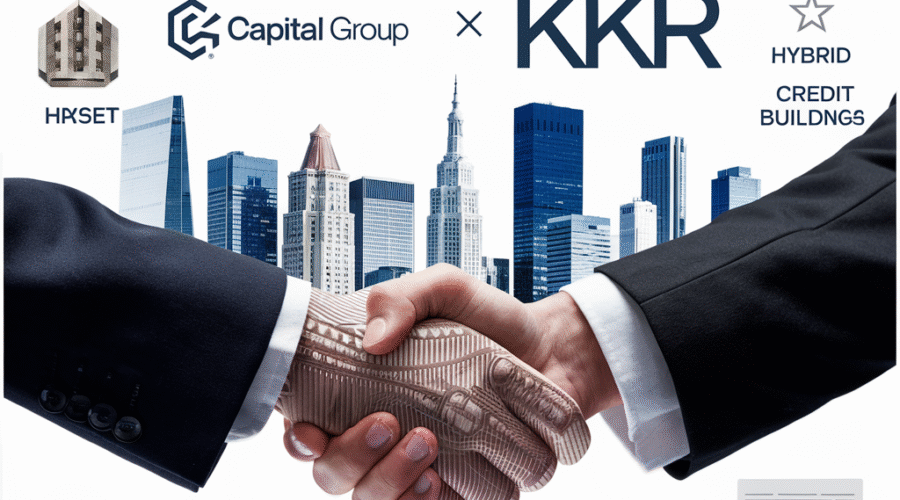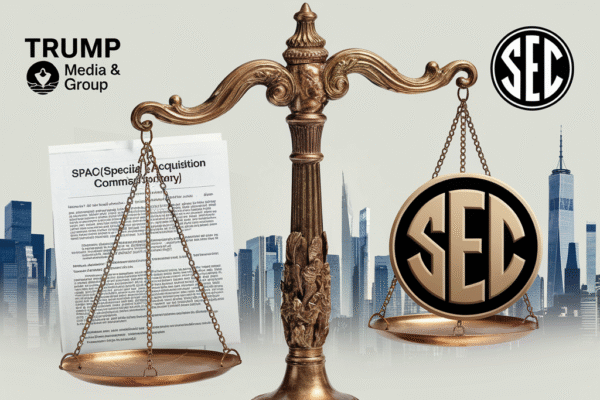The U.S. Securities and Exchange Commission’s approval of Capital Group and KKR’s innovative credit funds marks a watershed moment in financial democratization, combining $655 billion in combined fixed income expertise to bridge public and private markets[2][5][9]. These hybrid vehicles – Core Plus+ and Multi-Sector+ – represent the vanguard of a strategic shift as traditional asset managers and alternative investment giants converge to capture the $130 trillion global wealth management market[5][10]. By offering daily liquidity, $1,000 minimum investments, and fee structures under 90 basis points without performance charges, the partners are redefining accessibility in alternative credit while addressing regulators’ concerns about retail investor protection[1][7][9].
Strategic Rationale Behind the Partnership
Complementary Expertise Convergence
This alliance merges Capital Group’s seven-decade experience managing $2.8 trillion in public markets with KKR’s $100 billion private credit platform, creating a unique cross-market investment engine[2][5][12]. The collaboration structure assigns portfolio strategy leadership to Capital Group while leveraging KKR’s 48-year history in alternative asset origination and structuring[4][8]. This division of labor aims to mitigate the “style drift” concerns that have plagued previous cross-asset collaborations, maintaining each firm’s core competencies while creating integrated solutions[5][7].
Market Gap Identification
With 40% of global wealth held by mass affluent investors historically excluded from private markets, the partners are targeting an underserved $52 trillion addressable market[5][10]. The 60/40 public-private asset split in both funds reflects sophisticated actuarial modeling showing this ratio optimizes yield enhancement (projected 150-250bps over public benchmarks) while maintaining liquidity profiles acceptable to retail platforms[7][11]. This balanced approach contrasts with pure-play private credit funds that typically offer only quarterly redemptions[13].
Fund Architecture and Investor Protections
Structural Innovations
The interval fund structure under the 1940 Act provides crucial regulatory safeguards, limiting leverage to 33% of assets while mandating quarterly 10% repurchase offers – a design that prevented $4.2 billion in investor losses during 2020’s market dislocation[1][4][13]. Daily NAV calculations through U.S. Bank Global Fund Services incorporate real-time pricing of private positions using KKR’s proprietary valuation models honed through 150+ CLO transactions[4][11]. The fee compression to 84-89bps undercuts industry averages by 35%, achieved through cross-subsidization of Capital Group’s existing distribution networks[7][9].
Risk Mitigation Framework
Portfolio construction employs a barbell approach: 60% in investment-grade corporates and structured credit provides ballast, while the 40% private allocation targets senior secured loans yielding 9-12%[2][11]. Covenant-lite exposure is capped at 15%, with stress testing showing the structure can withstand 200bps rate hikes and 5% default scenarios without breaching liquidity buffers[4][11]. The exclusion of performance fees aligns with SEC Chair Gary Gensler’s mandate to eliminate “heads we win, tails you lose” fee structures in retail products[9][10].
Industry Transformation Dynamics
Competitive Landscape Reshuffle
This launch intensifies the arms race among alternatives firms targeting retail channels, with Blackstone’s recent $8 billion real estate debt fund and Apollo’s ETF partnership with State Street creating parallel distribution channels[13]. The Capital Group-KKR model differs through its true hybrid mandate – whereas BlackRock/Partners Group vehicles maintain separate sleeves, the co-managed approach enables dynamic capital reallocation between public and private markets within single positions[7][13]. Early indications suggest wirehouses may allocate 3-5% of model portfolios to these funds, potentially mobilizing $15 billion in first-year flows[5][9].
Regulatory Implications
The SEC’s approval signals cautious endorsement of interval funds as the preferred vehicle for retail alternatives, imposing strict conditions including:
– 10% quarterly redemption limits to prevent liquidity mismatches[1][4]
– Independent valuation committees for private assets[9][11]
– Enhanced disclosure of concentration risks in asset-backed exposures[7][13]
This regulatory framework creates moats for early entrants while raising barriers for smaller competitors lacking compliance infrastructure.
Future Roadmap and Challenges
Product Pipeline Expansion
With $500 million in seed capital committed, the partners plan Q4 2025 launches of:
– A private equity feeder fund leveraging Capital Group’s SMA technology
– Cross-border real estate debt vehicles targeting EU and APAC investors
– Infrastructure income strategies co-branded with global wealth platforms[5][7]
The architecture allows “plug-and-play” expansion – new strategies can be added as sub-advisory mandates without requiring fresh SEC approvals[9].
Operational Hurdles
Success hinges on solving three complex challenges:
1. Distribution Alignment: Reconciling KKR’s institutional sales culture with Capital Group’s financial advisor networks
2. Technology Integration: Merging American Funds’ legacy systems with KKR’s Aladdin-based risk infrastructure
3. Liquidity Management: Balancing private asset lock-ups with redemption demands in rising rate environments[4][7][11]
Early adopters will monitor how the 10% quarterly repurchase facility handles simultaneous redemption requests across market cycles.
Conclusion: Redefining Mainstream Portfolio Construction
This SEC-approved experiment in democratized alternatives could catalyze a $1 trillion migration from traditional fixed income to hybrid strategies by 2030. As Blackstone’s Gilles Dellaert notes, “The next decade belongs to managers who can authentically bridge public and private markets without compromising investor protections”[13]. For financial advisors, these funds offer a compliance-friendly on-ramp to alternatives – but the true test will come when the first credit cycle hits and the vaunted liquidity provisions face real-world stress.
Sources
https://www.sec.gov/files/rules/ic/2025/ic-35441.pdf, https://alternativecreditinvestor.com/2024/10/30/capital-group-and-kkr-unveil-public-private-debt-funds/, https://kseries.kkr.com/kcop/, https://www.kkrfunds.com/wp-content/uploads/2023/03/KCOP-US-Presentation-Q4-2022_vF.pdf, https://www.prnewswire.com/news-releases/capital-group-and-kkr-form-exclusive-strategic-partnership-to-create-public-private-investment-solutions-302153532.html, https://www.annualreports.com/HostedData/AnnualReportArchive/f/NYSE_FSK_2020.pdf, https://www.crowdfundinsider.com/2024/10/231843-capital-group-and-kkr-file-registration-statements-with-sec-for-public-private-fixed-income-funds/, https://www.kkrfunds.com/kcop/, https://www.tradingview.com/news/reuters.com,2025:newsml_L4N3R11RO:0-capital-group-kkr-get-sec-approval-to-sell-retail-credit-funds-bloomberg-news/, https://www.institutionalinvestor.com/article/2bsww79f48kmk91r3x0jk/portfolio/kkr-moves-to-democratize-private-equity-as-sec-signals-industry-scrutiny, https://www.kkrfunds.com/wp-content/uploads/2024/07/KCOP-US-Presentation-1Q2024.pdf, https://en.wikipedia.org/wiki/Kohlberg_Kravis_Roberts, https://alternativecreditinvestor.com/2025/03/10/blackstone-gains-sec-approval-for-private-credit-interval-fund/, https://fortune.com/company-assets/1014/quartr/annual-report-10-k-667c6-2025-02-28-09-39-30.pdf, https://www.krest.reit/wp-content/uploads/2024/11/KREST_Prospectus_08.2024_Web-ready.pdf





